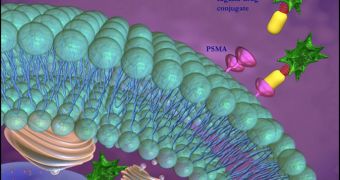For the first time ever, a team of experts at the Purdue University has devised a new method for detecting and treating prostate cancer from early research to clinical trials. If successful, the use of the drug will extend all over the world.
Usually, researchers at Purdue work with a pharmaceutical company. They license the work to the firm, which then manages the new chemical, taking it through preclinical trials, manufacturing, clinical trials and then later on to the market.
But the team decided to do it all on its own this time, say the Robert Wallace Miller director of the Purdue Center for Cancer Research (CCR), Timothy Ratliff. He is also the leader of the new project.
According to the expert, not handing a product to a pharmaceutical company until the chemical is very far along the development line minimizes the time needed to move from drug to practical applications.
“Purdue has a long history of research that has been the basis of life-saving treatments, and now we've shown that we can take a therapeutic drug or technology through every step from concept to clinical trial,” Ratliff explains.
“By managing the process all the way through to a clinical trial, the scientists behind the advancement maintain control of its development as it goes through the trials and get the satisfaction of seeing their discovery impact patients and improve lives,” he goes on to say.
Most likely, a license will be sold to a company when clinical trials are over, and the new treatment is ready to be manufactured and widely distributed. The Purdue Ralph C. Corley distinguished professor of chemistry Philip Low led the team that created the new technique.
It relies heavily on the use of a combo consisting of a radioimaging agent and a prostate cancer-targeting molecule. The latter seeks out, and attaches to, prostate-specific membrane antigens (PSMA).
More than 90 percent of all prostate cancers feature PSMA on the surface of the cellular membrane. The structure is now found on healthy cells, which means that the molecules Low and his team created will make their way only to tumor cells.
“The targeting molecule is in essence a homing device for prostate cancer that can link to a variety of therapeutic agents, including imaging agents and drugs,” explains Low. He is also a member of CCR.
“PSMA acts as the homing signal for the molecule, which binds to the protein and then is carried inside the cancer cell. The molecule and its cargo go only to cancerous tissue and leave healthy tissue unharmed,” he concludes.

 14 DAY TRIAL //
14 DAY TRIAL //